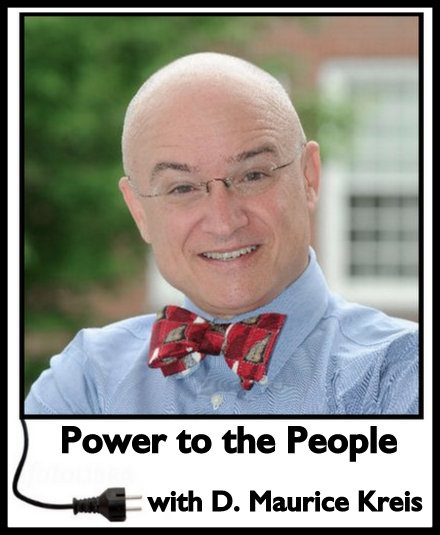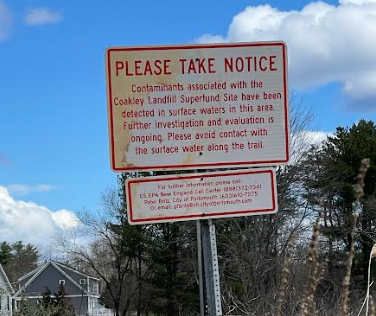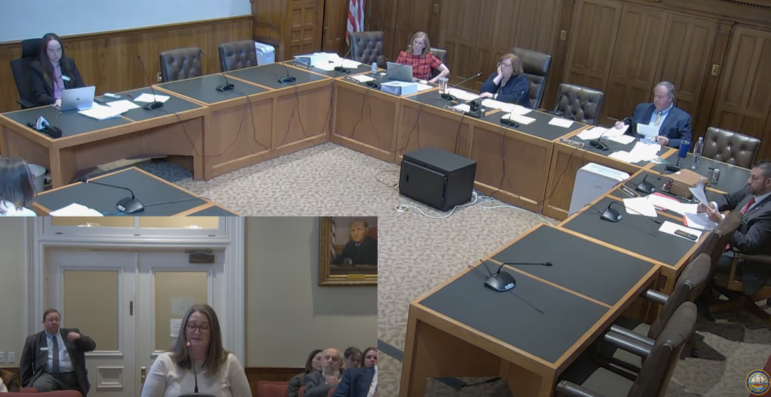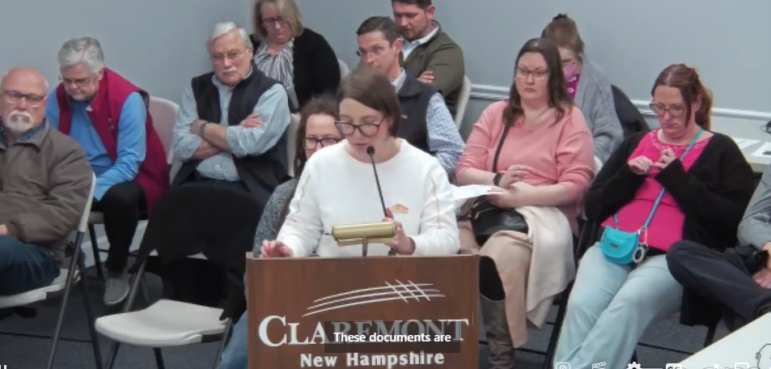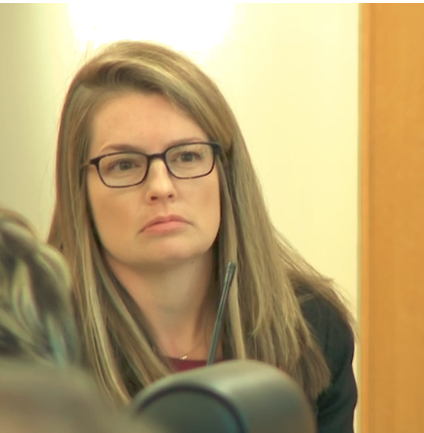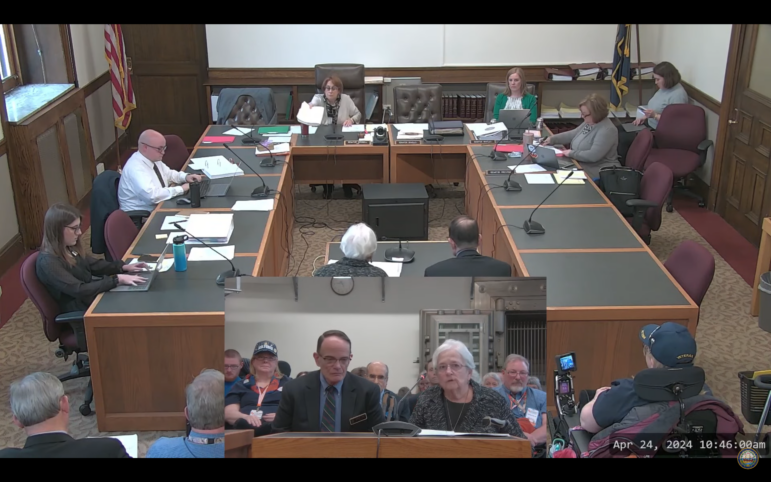Power to the People is a column by D. Maurice Kreis, New Hampshire’s Consumer Advocate. Kreis and his staff of four represent the interests of residential utility customers before the NH Public Utilities Commission and elsewhere. It is co-published by Manchester Ink Link and InDepthNH.org and distributed as a public service to news outlets across the state.
D. Maurice Kreis, Power to the People
Every so often, even amid the damp grey fog of utility regulation, a blinding flash of insight strikes. So it was, a couple of years ago, during a meeting with the vice president for operations at one of the state’s major electric utilities.
The veep in question was bragging, not without justification, about how well his company was progressing when it came to reliability. Both the number and the duration of routine outages were decreasing – a trend he attributed in large part to all the money the utility had been investing in new gadgetry deployed on its electric distribution circuits.
That prompted me to ask how the utility knows when enough is enough, reliability-wise. I wondered how much his residential customers (whose interests I represent) value each additional bit of improved reliability.
We have no idea, the utility executive admitted.
This is a big deal. Why? Because it is theoretically possible for electric utilities to make their systems operate perfectly, or nearly so. We have the technology; the only problem is that a nearly perfect electric grid would be infinitely more expensive than the grid we have.
How far in the direction of infinity should we push our electric bills in the name of reliability? Executives at investor-owned utilities – IOUs, in cheeky regulatory parlance – are, in a sense, the last people to whom we should entrust such decisions even though, obviously, they have the necessary engineering and financial acumen. The more an IOU invests in reliability-increasing hardware, the more profit it makes – a consequence of the way rates have long been set by regulators.
So, my blinding flash of insight was this: Someone needs to come up with a reasoned framework, in the name of utility customers, for how much reliability we as a state are willing to buy from our investor-owned utilities.
On Friday, September 6 we proposed such a framework.
Specifically, the Office of the Consumer Advocate (OCA) submitted written testimony in the ongoing grid modernization investigation docket at the Public Utilities Commission (PUC).
The PUC has been conducting its so-called “grid mod” investigation since 2015. First there was the “Grid Modernization Working Group,” a nearly year-long long slog of monthly meetings at which consumers and other outside interests were vastly out-staffed by the utilities and their experts. When the Working Group issued a somewhat equivocal report in March of 2017, the Staff of the PUC then took nearly two years to develop its own set of recommendations, a 172-page document.
Now, finally, things are coming to a head with the submission of new proposals on September 6.
What do the IOUs want? Free money, according to their joint proposal. Specifically, their filing calls for a grid mod “tracker” – i.e., a special and non-bypassable charge on everyone’s electric bill that is designed, according to the utilities, to “accelerate the investment of incremental grid technology over and above ‘business as usual’ investments” for at least five years.
We at the OCA have a different plan for departing from “business as usual.”
To help us develop a grid modernization proposal, the OCA hired Paul Alvarez and Dennis Stephens of the Wired Group in Colorado. Alvarez is a utility management expert and the author of Smart Grid Hype & Reality, a pro-consumer treatise now in its second edition. Stephens is an electrical engineer who retired from the mega-utility Xcel Energy in 2011 as director of innovation and smart grid investments.
They saw it coming.
“IOUs across the U.S. have proposed exceptionally large increases in distribution rate base under the ‘grid modernization’ banner, along with requests for enhanced cost recovery mechanisms,” Alvarez and Stephens said in their written testimony. “Yet IOU interest in increasing distribution rate base conflicts directly with customer interests, and state policies, aimed at energy cost effectiveness.”
This conflict, according to the OCA witnesses, “indicates that a new, transparent, stakeholder-engaged process for determining the most appropriate level of distribution investment is required.”
The heart of our proposal for this democratized planning of grid investments is known as “RIDS” – risk-informed decision-making support, for evaluating projects that are both discretionary and have difficult-to-quantify benefits.
“As examples, an IOU could spend capital to reduce stray voltage risk, wire down risk, cybersecurity risk, service interruption risk, or distributed generation interconnection delay risk,” Alvarez and Stephens explain. “Unconstrained, an IOU with capital bias would like to spend a lot of capital reducing all of these risks. But customers ask, ‘How can the IOU maximize risk reduction value across all risk types for the least amount of capital?
“Risk-informed decisions support can help answer this difficult question by comparing equalized risk reduction levels relative to costs for various projects or alternatives and selecting projects or alternatives on the basis of risk reduction per dollar.”
Alvarez and Stephens believe utilities are already using RIDS behind the scenes – they see signs of it within at least one New Hampshire electric utility – but contend that the utilities don’t like to admit it because RIDS is “designed to optimize (and thereby reduce) capital investment.” RIDS was first developed by NASA, which “recognized it was economically infeasible to reduce all risks to zero,” according to the OCA witnesses.
So if the utilities are already using RIDS, what’s truly new and different about the OCA proposal? Sunshine.
We agree with the utilities and the Staff of the PUC that it’s time to replace Least-Cost Integrated Resource Planning – an artifact of the pre-restructuring era of vertically integrated electric utilities, now an onerous homework assignment for IOUs that no longer own generation – with so-called “Integrated Distribution Planning” intended to drive innovation and access to the grid for distributed (i.e., grassroots) generation (whether rooftop solar or otherwise).
But we want to open up the process so that stakeholders participate directly in the planning process rather than just critiquing utility plans, after the fact, in the PUC hearing room.
Whom do we have in mind as active participants? Not just us (representing residential customers), Clean Energy New Hampshire (which represents solar developers and other purveyors of localized renewable energy), the Conservation Law Foundation (and other energy-focused nonprofits) but even the Business and Industry Association (BIA). As the most prominent representative of commercial and industrial electric users, the BIA should be at the table.
“Decisions reached through the collective wisdom of multiple stakeholders based on objective and available data will undoubtedly be better than decisions made by a single stakeholder which is biased by an interest in capital investment and which holds all data close to the vest,” Alvarez and Stephens testified.
We anticipate a skeptical, and perhaps even hostile, reaction from the utilities. But it is time to break out of the fog and into the sunshine – or, perhaps more precisely, into the bright light that only a truly modern grid operated in the public interest can produce.
